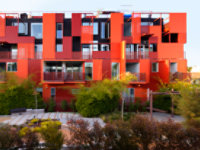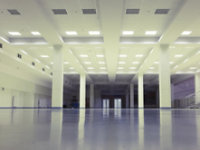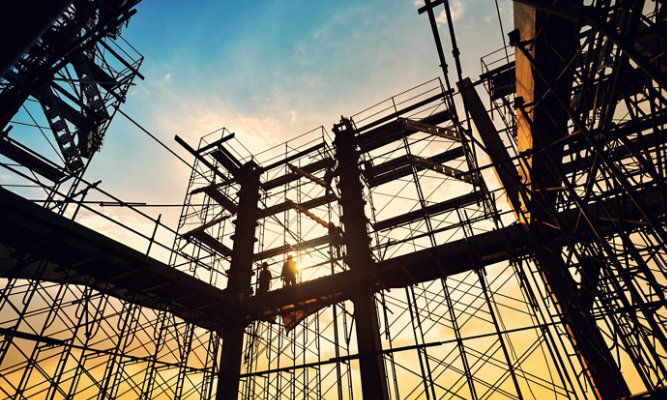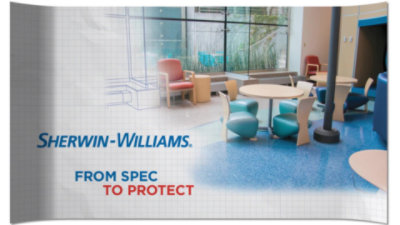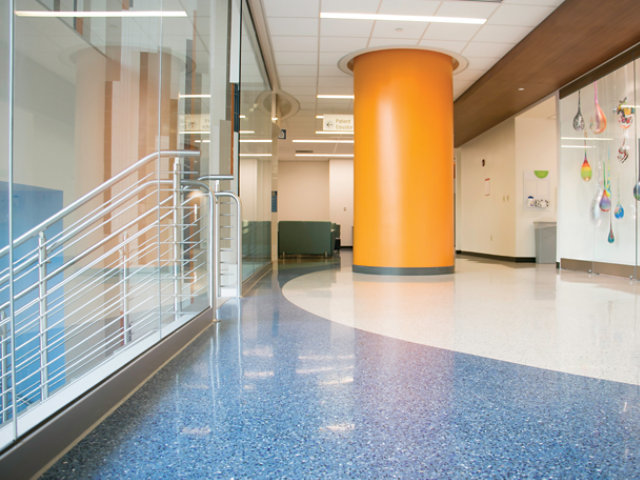
Mitigating safety risks with color, coatings, and flooring.
How to enhance building safety through wayfinding, fire protection, and slip-resistant flooring.
As seen in AIA
Architects play a critical role in the development and execution of building safety. They must ensure the safety of the structure itself, and consider how building inhabitants will interpret and navigate its various spaces for hazards and cautionary cues. Architects can be responsible for safety in the design phase and during the construction process, and should be constantly considering the “what-ifs.”
In addition to adhering to workplace safety guidelines, building codes, and city or state ordinances, architects can implement design tactics and specify protective materials intentionally designed to promote safety in the built environment. To start, consider color, fire protection coatings, and slip-resistant flooring as methods to mitigating safety risks.
Color
Using color as a wayfinding tool has become an important component of safety in architecture and design. Implemented through paint and coatings, color can be one of the simplest tactics used to guide people through a complex built environment. For example, hospitals, schools, and medical/care-related buildings often use color to distinguish spaces designed to serve specific purposes, like elementary school restrooms or hospital floors.
OSHA Standard 1910.144 establishes safety color codes for marking physical hazards using inherent denotations for colors like red and yellow. Within a commercial space, an architect can distinguish hazardous areas with red or yellow walls, beams, railings, or even flooring. On the contrary, softer hues of blue and green can evoke relaxation or calmness, suitable for spaces where urgency and danger aren’t primary concerns.
Fire protection coatings
Although fireproofing structural steel is a standard practice in new builds, there are multiple factors to consider when selecting which intumescent, or fireproofing, coatings to apply. First, it’s important to confirm that the coating has been thoroughly tested and vetted through third-party organizations such as Underwriters Laboratory. Specifically, you want to ensure the coating meets proper thickness and hourly rating thresholds for building code requirements.
You should also consider aesthetic and application factors when selecting fire protection coatings. If the design calls for exposed steel, you’ll want a fire protection coating developed with aesthetics, as well as performance, in mind. Look for a coating that provides a smooth finish and avoids orange peel, and when possible, have trained applicators apply the coating while in-shop. Using qualified fire protection coating applicators reduces the risk of inconsistencies and missed spots, and increases overall coatings performance.
Slip-resistant flooring
The ideal flooring system in a commercial setting is slip-resistant and cleanable—achieving a safe surface to walk on and enabling proper sanitation. Achieving this combination, however, can be challenging for some flooring materials, which is why resinous flooring systems are a common solution in commercial spaces.
Despite misconceptions, there are no federal (ADA or OSHA) requirements for slip resistance when it comes to resinous flooring. Although ASTM D2047 is a commonly used test method centered around a static coefficient of 0.6, it only applies to terrazzo or polished concrete sealers. Newer, updated test methods provide a safer, more accurate slip-resistance rating, such as ASTM E303-93 (British Pendulum Method), which has been adopted by 49 countries, and may become the U.S. standard. Ensure safety and slip resistance through resinous flooring by choosing a system that has passed multiple test methods, not just ASTM D2047, and that can be mocked up or demonstrated in real settings.
Prevention
The best way to mitigate safety risks in any building is through prevention planning. Although architects and engineers can’t prevent all accidents, there are ways they may help mitigate them through strategic building materials and design.
Featured Media
Discover More
View articles, videos and other content related to this topic or other topics in our resource center.
Go to Resource Center